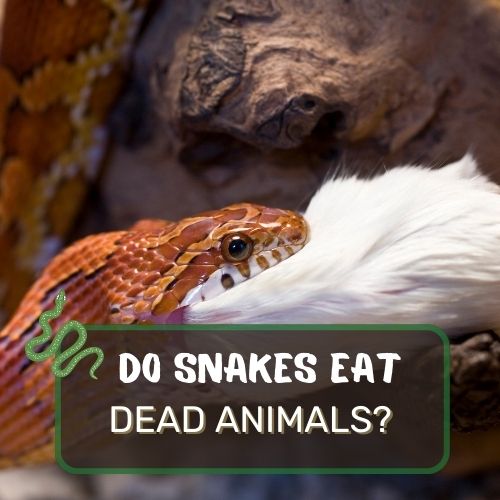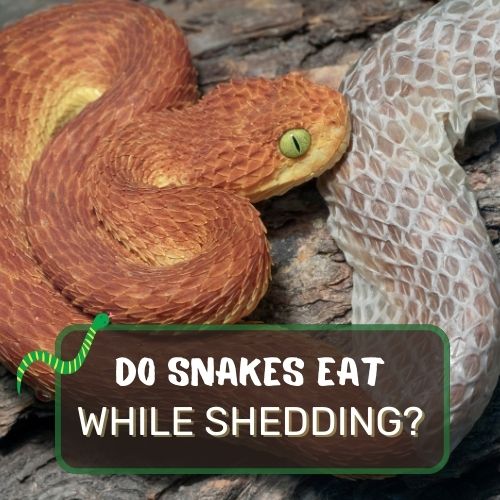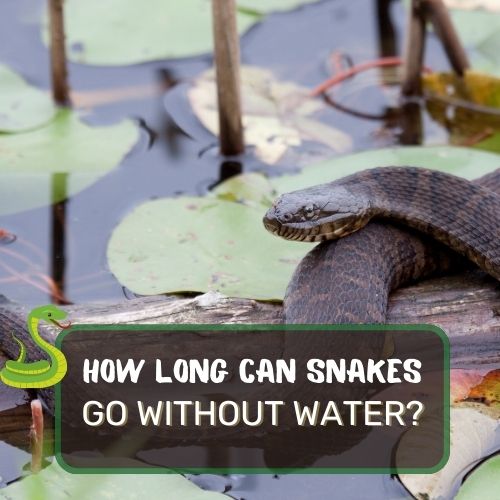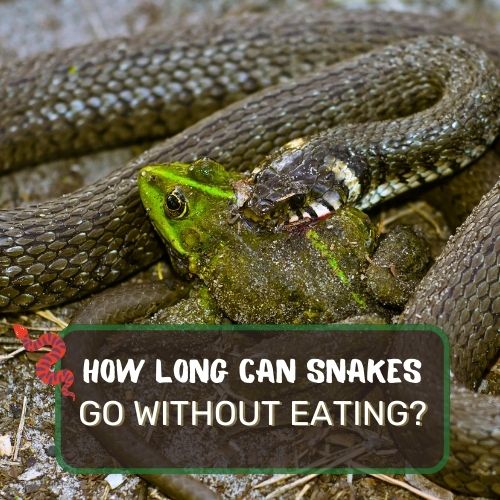
Curious about the eating habits of snakes? Wondering if snakes consume dead animals?
In this article, we delve into the fascinating world of snake diets and behaviors, specifically exploring whether snakes eat dead animals.
Discover the factors that influence their dietary choices, from species differences to environmental conditions.
Learn about their preference for live prey and the instances when they resort to consuming carrion. Unravel the ethical considerations of feeding snakes, including the welfare of both prey and the snake itself.
Furthermore, we’ll explore the best feeding practices for pet snakes, addressing the benefits and drawbacks of offering pre-killed prey.
Join us on this captivating journey to gain a deeper understanding of these enigmatic reptiles.
Table of Contents
- 1 Do Snakes Eat Dead Animals? (Short Answer)
- 2 Snakes’ Diet and Eating Habits
- 3 Carrion as a Food Source for Snakes
- 4 Decomposition and Digestion in Snakes
- 5 Safety and Health Considerations For Snakes
- 6 Ethical Considerations of Feeding Snakes
- 7 Feeding Practices for Pet Snakes
- 8 The Biggest Animals Snakes Have Eaten
- 9 FAQ
- 10 Conclusion
Do Snakes Eat Dead Animals? (Short Answer)
Yes, snakes do eat dead animals. While most snakes prefer live prey for their nutritional needs and natural hunting behavior, certain species have adapted to consume carrion or dead animals when live prey is scarce or during times of weakness. This behavior allows them to survive in challenging conditions and showcases their adaptability in the wild.
In captivity, pet snakes can also be fed pre-killed or frozen-thawed prey, which ensures their safety during feeding and eliminates the risk of injury from live prey.
Snakes’ Diet and Eating Habits

Snakes, the enigmatic reptiles, have a unique dietary preference that sets them apart from most other creatures.
These slithery beings are carnivores, which means their primary food source consists of other animals. From small rodents to insects, birds, and even other reptiles, snakes have an incredibly diverse diet.
Snake Eating Patterns
In the wild, snakes are opportunistic hunters, and their eating patterns depend on factors such as their species, size, and habitat. Some snakes are equipped to take down large prey, while others rely on smaller meals.
Regardless of their size, one common trait among snakes is their ability to consume prey much larger than their head, thanks to their astonishingly flexible jaws.
When hunting, snakes employ various methods to catch their prey.
Some use constriction, wherein they squeeze their victims until they succumb to the pressure, while others rely on venomous bites to immobilize their prey before devouring it.
Preference for Live Prey
Despite their varied diet, snakes typically prefer to feast on live animals. This preference stems from their instinctive hunting behavior, honed over centuries of evolution.
Living prey provides essential nutrients and energy, ensuring the snake’s survival and overall well-being.
Carrion as a Food Source for Snakes

Carrion refers to the decaying flesh of dead animals. While it may seem unappetizing to most creatures, certain snakes have adapted to take advantage of this unconventional food source.
These snakes are often referred to as “carrion eaters” or “scavengers.”
Understanding Carrion and its Role
Snakes that feed on carrion play a vital role in the ecosystem by helping to clean up the environment. They act as nature’s janitors, consuming carcasses that would otherwise rot and attract disease-carrying organisms.
Examples of Snakes Eating Carrion
One well-known example of a carrion-eating snake is the kingsnake, a non-venomous species found in various regions across the Americas.
Kingsnakes are opportunistic feeders, and their diet includes rodents, birds, eggs, and other reptiles. They are also known to scavenge on dead animals when live prey is scarce.
Another fascinating example is the infamous black mamba, a venomous snake found in parts of Africa.
Although primarily known for its deadly venom and lightning-fast strikes, black mambas have been observed eating carrion in times of food scarcity.
Why Snakes Might Have to Eat Dead Animals
While snakes generally prefer live prey, there are situations in which they may resort to consuming dead animals.
Food scarcity is the most common reason. When live prey becomes scarce or challenging to catch, snakes may turn to carrion as a survival strategy.
Additionally, injured or sick snakes may also consume carrion when they are unable to hunt actively. This behavior helps them sustain themselves during periods of weakness or recovery.
Decomposition and Digestion in Snakes

Handling Decomposition in Prey
When snakes consume dead animals, they encounter the challenge of dealing with decomposition.
Unlike fresh prey, carrion is already in the process of decay, leading to potential risks associated with consuming rotting meat. However, snakes have evolved remarkable adaptations to handle this situation.
To begin, the snake’s digestive system plays a crucial role in managing decomposition. Upon ingestion, the snake’s powerful stomach acid works to break down the decaying flesh.
This strong acid not only aids in digestion but also helps neutralize harmful bacteria present in carrion.
Additionally, the snake’s quick digestion process minimizes the time the decaying material spends in its system, reducing the chances of harmful bacteria affecting the snake’s health.
Unique Digestive Systems and Rotting Meat
Snakes possess an extraordinary ability to digest rotting meat, thanks to their specialized digestive systems. Their digestive tracts are relatively simple yet efficient.
After swallowing the carrion, the snake’s digestive enzymes get to work, breaking down proteins, fats, and other nutrients from the decaying flesh.
Remarkably, snakes can digest their prey entirely, including bones, leaving behind only indigestible parts, such as fur, feathers, or scales.
This efficient digestion ensures that snakes can extract the maximum nutritional value from their meals, even when consuming carrion.
Safety and Health Considerations For Snakes

Potential Risks and Drawbacks
While snakes have adapted to consume carrion, there are still potential risks and drawbacks associated with this behavior. One significant risk is the exposure to harmful bacteria and pathogens present in decaying flesh.
Consuming carrion that is contaminated with dangerous microbes can lead to bacterial infections and other health issues in snakes.
Moreover, eating carrion that has been exposed to external toxins or chemicals can also be detrimental to the snake’s health.
As carrion-eating snakes often inhabit urban areas, they are at an increased risk of encountering carrion contaminated with pollutants or pesticides, which can have severe consequences on their well-being.
Impact on Snake Health and Longevity
While snakes can handle consuming carrion in moderation, a diet primarily based on rotting meat can negatively impact their health and longevity.
Live prey provides a more balanced and nutritious diet for snakes, ensuring they get all the essential nutrients required for growth and maintenance.
A steady diet of carrion may lead to nutritional deficiencies, affecting the snake’s overall health and potentially shortening their lifespan.
In addition, consuming carrion may not provide the same level of energy and sustenance as live prey, which can hinder the snake’s ability to thrive and reproduce successfully.
Understanding the risks associated with snakes eating dead animals is crucial in ensuring their well-being.
While their adaptive digestive systems allow them to consume carrion, it’s essential to prioritize their natural diet of live prey to maintain their health and longevity in the wild.
Ethical Considerations of Feeding Snakes

Ethics of Feeding Live Prey vs. Dead Animals
The debate surrounding the ethics of feeding live prey versus dead animals to snakes is a contentious issue among reptile enthusiasts and animal welfare advocates.
Feeding live prey to snakes is a practice rooted in the idea of providing them with a more natural hunting experience, mimicking their wild feeding habits.
However, there are ethical concerns regarding the welfare of the live prey. Live animals can experience fear and stress during the encounter with the snake, which can be seen as unnecessary suffering.
In some cases, live prey can also injure the snake during the struggle, posing potential harm to the snake.
On the other hand, feeding snakes pre-killed or dead animals is considered a more humane approach as it eliminates the suffering of live prey.
While it may not replicate the thrill of hunting for the snake, it ensures a more controlled and safer feeding experience.
The Welfare of Prey and Snake
When considering the ethics of feeding snakes, it is essential to assess the welfare of both the prey and the snake.
While live prey might be seen as providing a more natural feeding experience for the snake, it comes at the cost of the prey’s well-being.
Feeding snakes with pre-killed or dead animals ensures that the prey does not suffer unnecessarily during the feeding process. This approach aligns with the principles of animal welfare, aiming to minimize harm to living beings.
Additionally, using dead animals for feeding reduces the risk of injury to the snake, promoting its welfare.
In the wild, snakes might occasionally encounter carrion and consume it to survive, but when it comes to captive settings, offering pre-killed prey provides a safer and more controlled feeding environment.
Feeding Practices for Pet Snakes

Best Practices for Feeding Pet Snakes
Feeding pet snakes requires careful consideration and adherence to best practices to ensure their health and well-being.
When it comes to offering food, pet owners should prioritize the snake’s nutritional needs and overall safety.
It is essential to feed pet snakes a diet that closely resembles their natural prey items. This means offering a variety of appropriately sized prey, whether live or pre-killed, to ensure a balanced diet.
Reptile specialists recommend providing frozen-thawed prey for convenience and safety.
Benefits and Drawbacks of Feeding Pre-killed Prey
Feeding pre-killed prey to pet snakes offers several advantages. Firstly, it eliminates the risk of injury to the snake during the feeding process.
This is particularly important for smaller or more delicate snake species that could be vulnerable to injury from struggling prey.
Secondly, pre-killed prey is readily available and easy to store. It saves pet owners from the challenges of keeping live feeder animals, which require additional care and housing.
However, there are some potential drawbacks to consider. Some pet snakes may be reluctant to accept pre-killed prey, especially if they are used to hunting live prey.
In such cases, pet owners may need to employ scenting techniques or slowly transition the snake to accept pre-killed food.
The Biggest Animals Snakes Have Eaten

Fascinating Examples of Snakes Consuming Large Prey
Snakes’ ability to consume prey much larger than their head has led to some astonishing instances of them devouring large animals.
While live prey is their usual choice, there have been remarkable cases of snakes consuming large prey, including dead animals.
One such extraordinary example is the Burmese python, a massive constrictor found in Southeast Asia.
These pythons have been known to consume animals as large as deer and even alligators. In captivity, Burmese pythons have been observed consuming large rabbits and pigs.
Another fascinating case involves the African rock python, one of the continent’s largest snake species. These powerful constrictors have been documented consuming impalas, antelopes, and even warthogs.
Notable Instances of Snakes Consuming Carcasses
In the wild, snakes may come across carcasses of animals that have died from natural causes or as a result of predation by other animals.
Carrion-eating snakes, such as kingsnakes and black mambas, have been observed feeding on such carcasses to supplement their diet when live prey is scarce.
Notably, the green anaconda, the world’s heaviest snake, has been seen consuming large animal carcasses in its native South American habitat.
These colossal serpents, which can reach lengths of over 25 feet, have the strength and capacity to engulf and digest sizeable prey, making them impressive scavengers when the opportunity arises.
FAQ
Can You Feed Dead Animals to Snakes?
Yes, it is possible to feed dead animals to snakes, and it can be a viable option for pet owners. Many snakes can readily accept pre-killed or frozen-thawed prey, which can be more convenient and safer than offering live prey. Feeding dead animals to pet snakes ensures the snake’s safety during feeding and eliminates the risk of injury from struggling prey.
Why Is My Snake Not Eating My Dead Mouse?
If your snake is refusing to eat a dead mouse, there could be several reasons for this behavior. Some snakes are more selective eaters and may prefer live prey or freshly killed animals. In such cases, offering live prey or freshly killed rodents might entice them to eat.
Additionally, snakes may go through periods of decreased appetite due to factors like stress, illness, or environmental changes. If your snake’s refusal to eat persists, it’s best to consult a reptile veterinarian to rule out any health issues.
What Is the Biggest Animal a Snake Has Ever Eaten?
The biggest animal ever recorded to be eaten by a snake was an impala. In a rare and exceptional event, an African rock python was documented consuming a fully-grown impala in South Africa. This feat was captured on camera and became a remarkable instance of a snake’s remarkable ability to swallow large prey. Such occurrences are uncommon, as snakes primarily prey on animals of a smaller size relative to their body length.
Conclusion
In this article, we have delved into the intriguing world of snakes and their dietary habits, focusing on whether they eat dead animals.
Snakes, as carnivorous reptiles, possess a diverse diet that includes a wide range of prey items, from live animals to carrion.
We explored the typical diet and eating patterns of snakes, emphasizing their preference for live prey due to instinctive hunting behavior.
However, some snakes have adapted to consume dead animals, showcasing their adaptability in the face of food scarcity or during periods of weakness.
Regarding the ethical considerations of feeding snakes, we discussed the welfare of both the prey and the snake, highlighting the potential benefits of offering pre-killed prey for pets.
This approach reduces the risk of harm to the snake and ensures a humane feeding experience.
In conclusion, snakes do eat dead animals, and their ability to consume large prey, both live and dead, is a testament to their remarkable adaptations.
As responsible pet owners and nature enthusiasts, it is crucial to explore and understand snake behavior, appreciating these fascinating creatures’ place in the natural world.




0 Comments